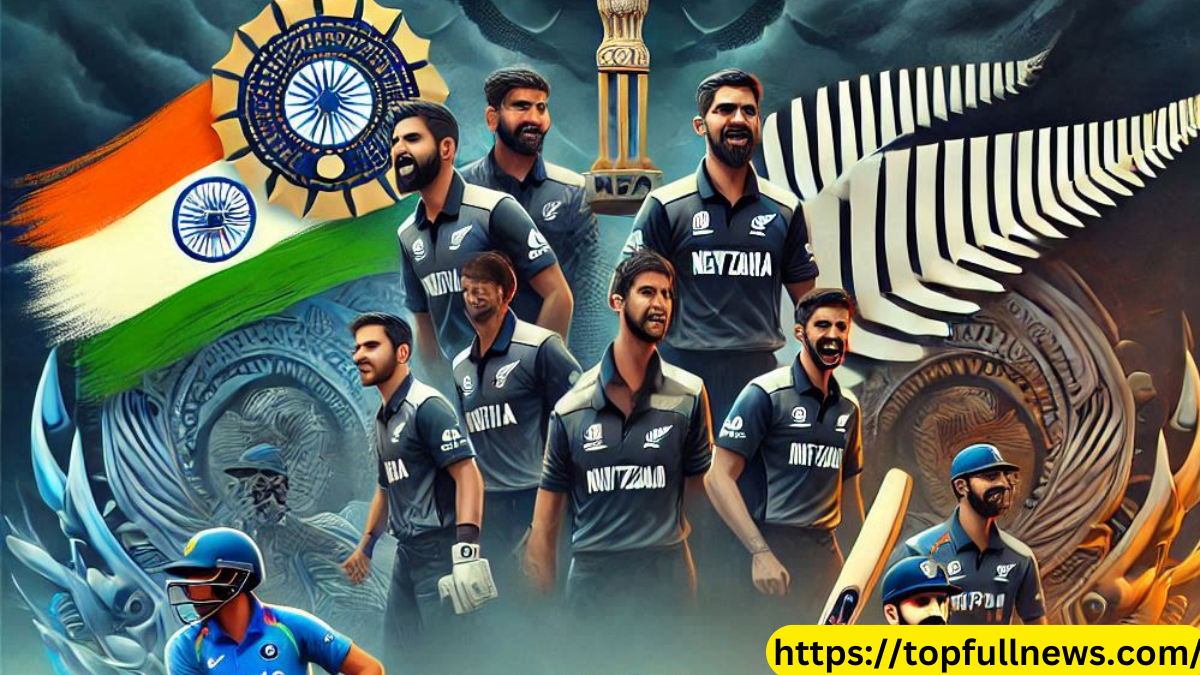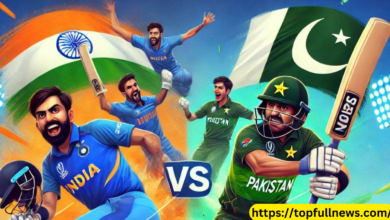The rivalry between the India National Cricket Team and the New Zealand National Cricket Team, while not as historically intense or politically charged as some of cricket’s other major rivalries, has nonetheless produced some of the sport’s most exciting moments. Both teams, known for their sportsmanship, strategic depth, and skill, have often brought out the best in each other. From their first encounters to the present day, the timeline of matches between India and New Zealand showcases a blend of high drama, competitive spirit, and evolution in both teams’ cricketing fortunes.
The Beginnings: Early Encounters in the 1950s and 1960s
The first time India and New Zealand met in international cricket was in 1955, during a Test series in New Zealand. At the time, India was still finding its footing in international cricket, and New Zealand, a team of consistent performers but not a cricketing powerhouse, was also in its formative years. The 1955 series was notable because India, led by Vinoo Mankad, faced off against New Zealand in the country’s own backyard, but they came up short in the first meeting, losing the series 1-0.
In the years that followed, India National Cricket Team vs New Zealand National Cricket Team Timeline played sporadically against each other. The contests in the 1960s were mainly Test matches, and while both teams showed potential, they were often seen as the underdogs when playing against the larger cricketing nations. India’s Test team, led by the legendary Nawab of Pataudi (Mansoor Ali Khan), had a few brilliant individuals like the legendary spinner Bapu Nadkarni, but as a team, they were still evolving. For New Zealand, the likes of Sir Richard Hadlee and the legendary batsman Martin Crowe would come later, making the team much more competitive.
During this period, matches between the two sides, though competitive, were often overshadowed by more prominent rivalries, especially with the likes of England, Australia, and the West Indies, who dominated world cricket at the time. Still, the India-New Zealand encounters laid the foundation for a growing relationship between the two teams.
The 1970s and 1980s: Growing Tensions and the Rise of Individual Stars
By the 1970s and 1980s, India’s cricket team had developed a strong identity, with players like Sunil Gavaskar, Kapil Dev, and Mohinder Amarnath emerging as leading figures in international cricket. New Zealand, too, was making progress, though they were still relatively overshadowed by their more prominent contemporaries. The late 1970s and early 1980s marked a shift for both sides as they began to gain more recognition on the world stage.
India and New Zealand met in several Test series during this period, but their most notable clash came during the 1987 Cricket World Cup. India, led by Kapil Dev, had made strides to become one of the dominant forces in limited-overs cricket. The 1987 World Cup was an important tournament for India, as they reached the semi-finals, where they faced New Zealand. This match was a thrilling contest that saw both teams fighting hard, but it ended in an Indian victory. The performance of players like Kapil Dev, Mohinder Amarnath, and the batting brilliance of Sunil Gavaskar was key to India’s triumph in this tightly contested match.
This marked the beginning of India’s domination of the one-day game, and as the years progressed, India began to firmly establish themselves as one of the premier teams in world cricket. New Zealand, although a competitive side, was yet to reach the heights India was achieving. Despite this, the quality of New Zealand’s cricket was undeniable, with players like the talented Martin Crowe, who would go on to play pivotal roles in many future matches.
The 1990s: Competitive Spirit and a Stronger New Zealand
The 1990s were a decade of growth for both teams. For India, the era saw the rise of the “fab five” — Sourav Ganguly, Rahul Dravid, Sachin Tendulkar, VVS Laxman, and Anil Kumble — who would go on to define an era of Indian dominance in world cricket. New Zealand, meanwhile, found itself with a balanced side led by the ever-reliable Martin Crowe and players like Chris Cairns, Shane Bond, and the enigmatic all-rounder Jacob Oram.
The 1992 Cricket World Cup was a defining tournament for both teams. India and New Zealand met in the group stages, and New Zealand emerged victorious in a match that highlighted their ability to challenge the top sides. The 1992 World Cup also marked New Zealand’s transformation into a team that could no longer be dismissed easily. Their win over India in that World Cup was emblematic of their growing stature as a team capable of taking on the best.
While India and New Zealand’s rivalry was still in its early stages in terms of global prominence, this period saw more closely contested matches. By the late 1990s, the two teams began to play against each other more regularly in various bilateral series, both in New Zealand and India, with the contests being tightly fought, particularly in the shorter formats.
The 2000s: Growth in ODI Dominance and T20I Debuts
The early 2000s witnessed India emerging as a cricketing powerhouse, with the likes of Sourav Ganguly, Virender Sehwag, and later, MS Dhoni, leading the team in various formats. India had now firmly established itself as one of the premier teams in world cricket, and their matches against New Zealand were always eagerly anticipated. The Indian side’s aggressive style of play and the presence of established stars like Tendulkar, Dravid, and Kumble made them a formidable team, especially in one-day cricket.
New Zealand, on the other hand, remained a consistent force but was still often seen as the underdog when compared to the likes of Australia, India, and South Africa. However, their performances continued to be characterized by strong teamwork, resilience, and a never-say-die attitude. Players like Daniel Vettori, Scott Styris, and the aforementioned Cairns were key to New Zealand’s competitive edge.
India and New Zealand met regularly in ODIs, with India emerging victorious on many occasions. The Indian team’s depth in batting, led by players like Sachin Tendulkar and Sourav Ganguly, along with a reliable bowling attack, often proved too much for New Zealand. However, New Zealand’s fighting spirit, particularly in tough conditions, meant that matches were rarely one-sided.
In 2007, India’s victory in the inaugural ICC T20 World Cup introduced a new dynamic to the India-New Zealand rivalry. New Zealand had performed admirably in the first T20 World Cup but fell short in the semi-finals. This period also saw the emergence of the T20 format as a key battleground, and India’s dominance in the shorter format was soon evident.
The 2010s: India’s Dominance and New Zealand’s Resilience
The 2010s were a decade of contrasting fortunes for the two teams. India continued its dominance in world cricket, winning the 2011 ICC Cricket World Cup and rising to the top of the ICC rankings in both Tests and ODIs. India’s success in global tournaments, under the leadership of MS Dhoni, made them one of the most feared teams in world cricket.
New Zealand, despite being highly competitive, often fell short against the major teams in global tournaments. However, the 2010s marked a period of resurgence for New Zealand, particularly with their performance in the 2015 ICC Cricket World Cup, where they reached the final. The team, led by Brendon McCullum, demonstrated resilience and tactical brilliance throughout the tournament. Their match against India in the semi-finals of the 2015 World Cup was one of the highlights of the decade. New Zealand won that match, thus securing a place in the final, where they faced Australia.
This victory over India was symbolic of New Zealand’s growing stature, and it marked a significant moment in the timeline of India-New Zealand cricketing encounters. While India’s team, including the in-form Virat Kohli, could not secure a win, New Zealand’s victory was well-deserved and highlighted their ability to rise to the occasion in big matches.
The rivalry continued to flourish through the decade, with regular series between the two teams. While India maintained its supremacy in most bilateral series, New Zealand continued to show flashes of brilliance, particularly in their home conditions.
The 2020s: New Zealand’s Resurgence and India’s Consistency
In the 2020s, New Zealand’s cricketing fortunes have been bolstered by the leadership of Kane Williamson, along with consistent performances from players like Ross Taylor, Tom Latham, and Kyle Jamieson. New Zealand’s remarkable performance in the 2019 ICC Cricket World Cup, where they reached the final and narrowly lost to England in a dramatic final, was another reminder of their resilience.
India, with a team led by Virat Kohli, and later by Rohit Sharma, continues to be one of the most consistent teams in world cricket. In 2021, India faced New Zealand in the final of the inaugural ICC World Test Championship, where New Zealand emerged victorious, further cementing their growing status in world cricket.
This period also saw the two India National Cricket Team vs New Zealand National Cricket Team Timeline teams facing off in numerous T20I and ODI series, with each encounter adding to the rich history of their rivalry. India’s consistent performances in global tournaments and New Zealand’s resilience in the Test format have made their encounters exciting and unpredictable.
Conclusion
The timeline of India vs New Zealand cricket encounters has been marked by a steady evolution of both teams. From early days of sporadic matches to the intense rivalries of the modern era, the contests between India and New Zealand have showcased both skill and determination. India’s rise as a cricketing powerhouse and New Zealand’s resilience as a consistently competitive team has provided cricket fans with some of the sport’s most thrilling moments. As both teams continue to evolve, their encounters are sure to remain among the most eagerly anticipated fixtures in world cricket.






